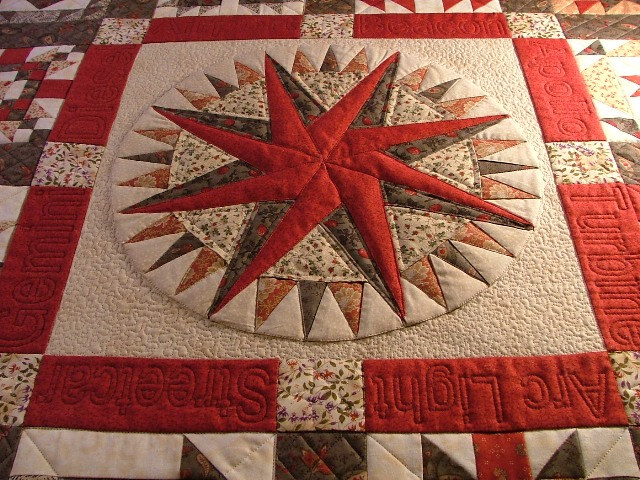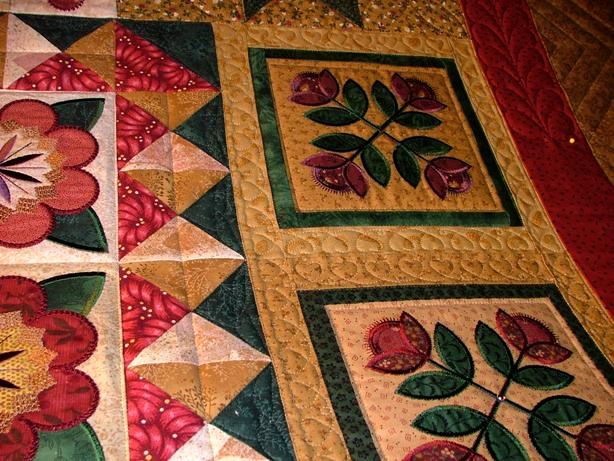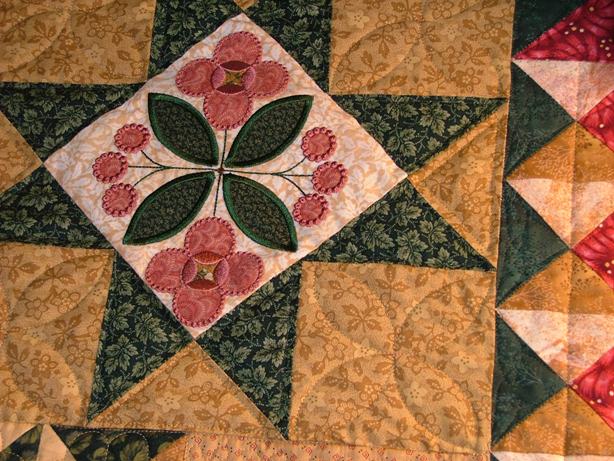Quilt Top and Backing Preparation:
Before sending your quilt top for quilting, ensure it's in top-notch condition. Press it flat from the back, with seams lying smooth. Trim any loose threads, especially if you're working with light-colored fabrics where stray threads could peek through.
Keep your top, batting, and backing separate – no need to baste or pin the layers together. Each piece will be loaded onto the machine individually. The backing and batting should be generously sized, at least 12 inches wider and longer than the quilt top to allow for proper alignment during quilting. We will be using those 12 inches by having 6 inches on the left and right, and 6 inches on the top and bottom. Need some quick math on how to calculate that? Use our calculator:
What type of batting? Preference here is for an 80-20 cotton to polyester batting. Warm and Natural, Warm and White, Dream Cotton products, and many other brands are available. Please do not bring fluffy poly battings — especially for children’s quilts. Polyester does not breath like cotton, and babies can over-heat very quickly when they are under a polyester batting. Have you ever seen a baby in a stroller with bright red cheeks? Usually, there is polyester involved. It is our policy not to use these battings, as a general rule, but especially for children’s quilts.
If you have a preference for the top or backing side, mark it clearly with a labeled piece of paper and attach it securely. Additionally, remove all selvages from the backing fabric to prevent shrinkage issues later on. Even if you sew two pieces together to create the backing, it’s a smart idea to cut off those selvages.
Helpful Border Hints:
To ensure your quilt's borders lay flat and avoid puckering or waviness, check out our article on wavy borders for helpful tips. Taking precautions while adding borders will result in a smoother, more professional finish for your quilt. A good way to test your borders is to fold the quilt in half and lay it on a hard surface like a kitchen or dining room table. If the center section is perfectly flat — but the borders are wavy — then you know your borders were stretched while being applied. The best thing to do is remove them. If you find that idea intimidating, just let us do the work for you.
Density:
When considering quilting density for your precious quilt, finding the sweet spot is crucial. Too far apart, and your masterpiece might lack durability and lose its charm after a few washes. Picture it: stitches far and wide, leaving your quilt looking sparse and vulnerable. On the flip side, stitching too close together might result in a quilt that's as tough as nails – almost bullet-proof, you could say! While this might sound appealing for the apocalypse, it's not exactly cozy for snuggling up on the couch. Aim for a balance; a density that provides strength and longevity without sacrificing that soft, cuddly feel. Your quilt should withstand the test of time while still inviting you in for a warm embrace. Strike that perfect balance, and your quilt will be cherished for generations to come.
Examples:
There are pictures below, but seeing quilts in person is much more important. We have an extensive array of quilt samples available for your perusal, ensuring you'll have a clear vision of how your quilt will appear upon completion. If time is of the essence or you simply prefer to leave everything in our capable hands, we've got you covered. Additionally, for your convenience, we offer a drop-box service for after-hours submissions. Simply include your name and phone number with your quilt, and any additional notes that you need. Send a text saying that you are requesting drop-box service and we will protect your quilt and text you when we receive it. Drop off your quilt whenever it suits your schedule, and we'll take care of the rest.
Things to Consider:
When selecting thread colors for your quilt, it's important to consider the overall tone and feel of the quilt. Neutral colors such as white, black, or gray can complement a variety of quilt designs, while matching the thread to the dominant color in the quilt top can create a cohesive look.
When choosing binding fabrics and styles, it's essential to take into account the contrast or coordination with the quilt top. Whether opting for a traditional double-fold binding or a more contemporary flange binding, the choice should enhance the overall aesthetic.
When measuring the quilt top, accuracy is key. Double-checking the dimensions and ensuring precise calculations will help provide an accurate estimate for materials and labor, giving you confidence in the final result. You don’t have to crawl around on the floor to try and measure your quilt top — just bring it into the shop and use our big table. Having an accurate estimate in advance makes it easier to talk about your project over the phone. That will save you time when you arrive.
There are a lot of choices to be made, and it’s wise to take the time required to plan properly. For that reason, we do not quote firm prices without seeing the project first. If you have trouble scheduling an appointment, you can email or text pictures to us and we can start the process from there.
























